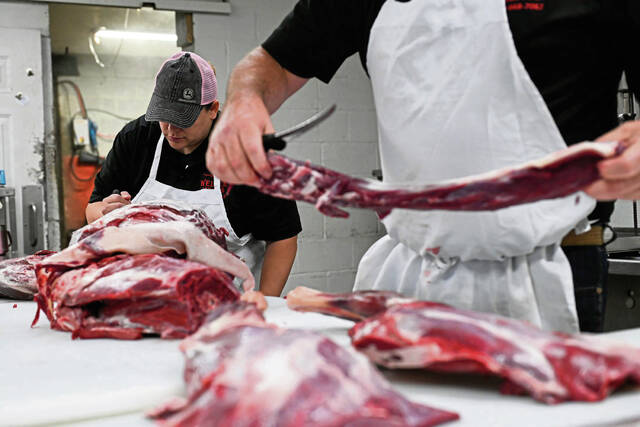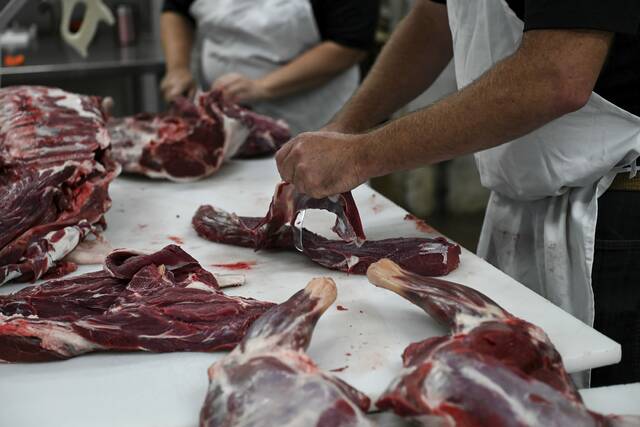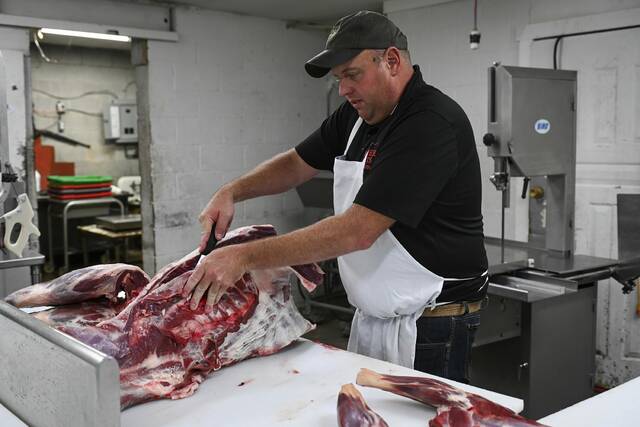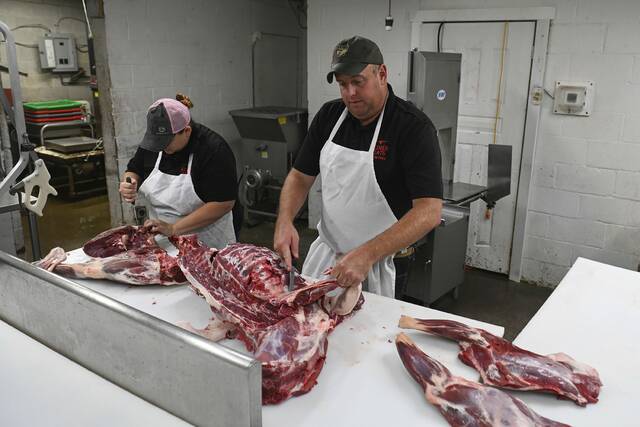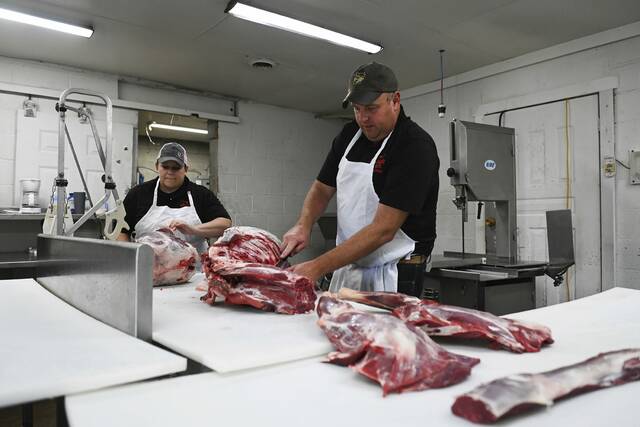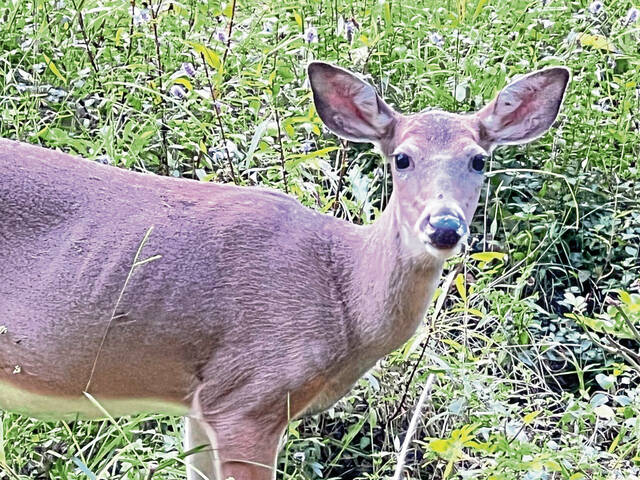Western Pa. hunters face new rules as state tries to manage chronic wasting disease in deer
Chronic wasting disease used to be something that was far away for most Western Pennsylvania deer hunters, centered in the south-central region of the state.
No longer.
In 2024, parts of southern Armstrong County and eastern Westmoreland County became part of a management area after wild deer in each area tested positive for CWD.
After a doe near Freeport tested positive this summer for the disease, the management area spread still farther, expanding into more of Armstrong County in addition to slivers of Butler and northern Westmoreland counties.
The expansion means even more hunters and deer processors have new rules to follow during the state’s deer hunting seasons, which opened last month with the early archery season.
Since the disease first was detected among Pennsylvania deer in 2012, the state Game Commission has steadily expanded its disease management areas in an attempt to combat the disease’s spread.
The disease
CWD is a neurological disease that affects members of the deer family, including elk, moose and Pennsylvania’s state animal, the white-tailed deer.
Spread via bodily fluids, the disease causes the slow deterioration of the animal’s brain, resulting in lethargy, weight loss and confusion.
This often leads to wandering, emaciated animals without fear of humans, sometimes described as “zombie deer.”
CWD is similar to mad cow disease, scrapie in sheep and Creutzfeldt–Jakob disease in humans. It is always fatal.
It is neither a virus nor a bacteria. Instead, it is spread via prions, misformed protein chains that cause other protein molecules in an infected animal to create “spongy” brain tissue with holes in it.
There has never been a recorded case of deer-to-human spread, but the U.S. Centers for Disease Control recommends not eating meat from infected animals.
It was first detected in Colorado in the 1960s, but it has since spread to the eastern United States as well as Europe and Asia.
In Pennsylvania, the majority of confirmed cases are concentrated in the south-central part of the state near Bedford and Blair counties.
The Game Commission maintains nine disease management areas.
Management area 2, which includes the eastern chunk of Westmoreland County, is by far the largest. It stretches to York County and as far north as State College.
Sections of Armstrong, Butler and northern Westmoreland counties now are part of management area 3, which was established in 2014 after CWD was detected among captive deer in Jefferson County. That area was expanded in 2024 and again this year after the positive test near Freeport.
New rules and testing
The management areas act as a sort of quarantine for potentially infected deer.
That means sportsmen who harvest deer within a disease management area aren’t allowed to bring its “high-risk parts” outside the management area or even to another management area unless they’re taken directly to a Game Commission-approved cooperating processor.
High-risk parts include the deer’s head, spinal column and spleen.
For those self-processing the deer, those high-risk parts must be discarded through a commercial trash service within the management area in which the deer was harvested. That means hunters can’t dump or bury remains.
Sportsmen who wish to mount a prize buck can seek out a cooperating taxidermist.
Within the management areas, residents are also prohibited from feeding or rehabilitating deer.
Though the process may complicate hunting season, Game Commission spokesman Josh Zimmerman said the management areas help isolate infected animals and slow the disease’s spread.
Since infected deer may take up to two years to display symptoms, Zimmerman said the state also set up several head collection boxes within the management areas for concerned hunters who would like to have their harvest tested for the disease.
Hunters must place the tagged heads in garbage bags before dropping them in the bins, which resemble Salvation Army donation boxes.
Zimmerman said Game Commission biologists regularly check the boxes and typically return test results in 7 to 10 days. During busier periods, however, the result times could be extended, he said.
“The only way to know is to test it,” he said.
Hunters can check test results online or call the commission. If CWD is detected, the commission will send a letter notifying the hunter.
If a hunter does harvest an infected deer, Zimmerman said, they can give up the animal to receive a new tag.
Cooperators
Melinda Weimer is the co-owner of Weimer Meats, a state cooperating processer in Loyalhanna. The processor is located in a small chunk of Westmoreland County within DMA 3 near the Indiana County line.
Her company processed around 1,000 deer last year without detecting a single case of CWD, she said.
Weimer saves the heads of deer harvested in the DMA for Game Commission biologists, who test samples of the parts before they’re disposed of.
She said the company places the parts in an isolated dumpster before they’re brought to a landfill. That ensures the flesh doesn’t make it back into the environment, where it could potentially infect more deer.
Though his business is less than 10 miles from Weimer and also in Loyalhanna, Sam Monteparte is technically in DMA 2.
The owner of Custom Skull Cleaning, Monteparte said he’s never encountered any confirmed cases of CWD, either.
But CWD or not, he said he doesn’t process anything that doesn’t look healthy.
A state cooperator for the past three years, Monteparte said he’s noticed a definite increase in business since the management area expanded into the region.
He said the Game Commission’s biologists are “very active,” visiting his shop at least three times a year to test for CWD.
A hunter’s perspective
Jeff Snyder, a trustee at Freeport Sportsmen’s Club and a Game Commission hunter safety instructor, has found himself in an awkward position.
If he harvests a deer on club land, which sits in the small sliver of management area 3 in Butler County, he would be prohibited from taking the animal to his Buffalo Township home or to any deer processor outside the management area.
Luckily, he said, he can process the animal with materials at the club. But for hunters in similar situations, he said the management areas are certainly going to make things more inconvenient.
Still, without a cure for the disease, Snyder said there’s no better way to control its spread.
This season, he said, he plans to test any deer he harvests using the drop-off boxes.
Snyder said he thinks most hunters are well aware of CWD, but specific management area boundaries may be a bit hazier among the sporting community.
Though hunters could avoid restrictions by heading to nearby areas outside the management areas, Snyder said he doesn’t expect a mass exodus.
Local sportsmen tend to stick to their stomping grounds, he said.
Those interested can find more information at pa.gov/cwd.
James Engel is a TribLive staff writer. He can be reached at jengel@triblive.com
Remove the ads from your TribLIVE reading experience but still support the journalists who create the content with TribLIVE Ad-Free.

